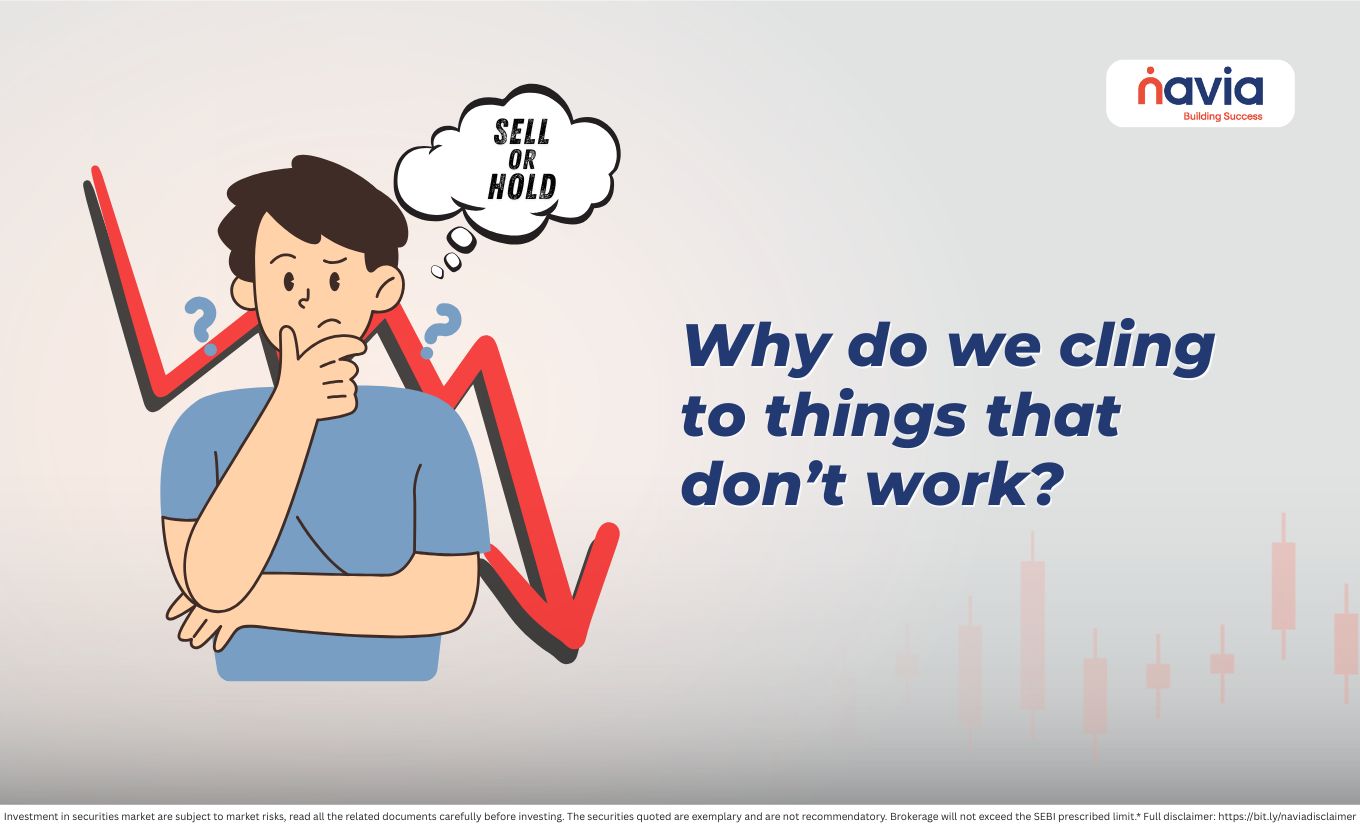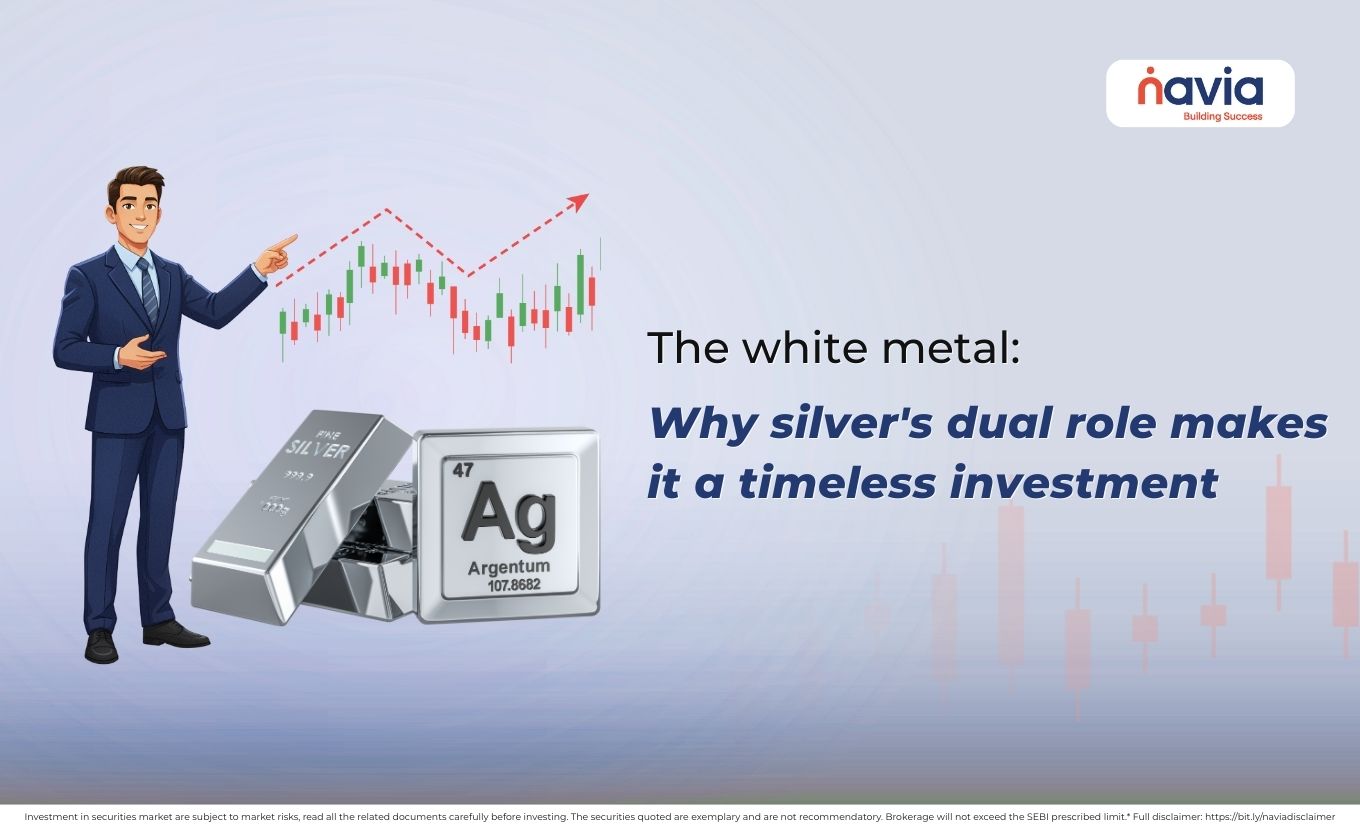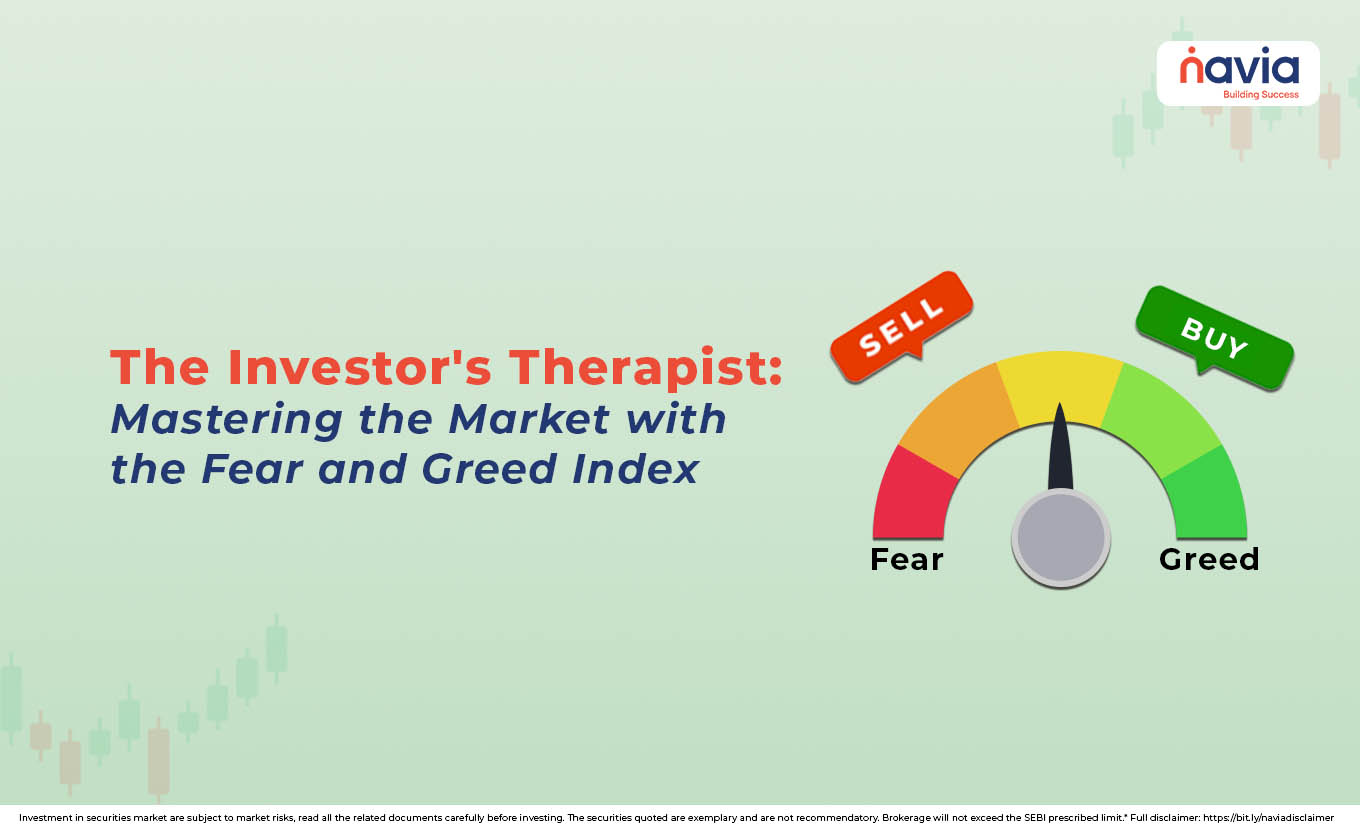Why Do We Cling to Things That Don’t Work?

- What is the Sunk Cost Fallacy?
- How it Affects Investors?
- Why Do We Fall for it?
- How to Avoid the Sunk Cost Trap?
- Final Thoughts
Have you ever held on to a stock just because you’ve already invested so much in it, even when all signals point to exit? Or continued an investment plan that no longer makes sense, simply because you’ve already “come this far”? That’s the Sunk Cost Fallacy at work.
What is the Sunk Cost Fallacy?
The sunk cost fallacy is a cognitive bias where we continue with an unproductive decision because of the time, money, or effort already invested—rather than making decisions based on future benefits.
In other words, we let past costs (which cannot be recovered) dictate our future choices.
Example outside investing:
➱ Watching a boring movie till the end just because you bought the ticket.
➱ Finishing a meal you don’t enjoy because you already paid for it.
How it Affects Investors?
In financial markets, the sunk cost fallacy can be costly:
🔸 Holding Loser Stocks Too Long – Investors refuse to sell at a loss, hoping to recover past investments.
🔸 Chasing Bad Strategies – Sticking with an underperforming trading strategy because you’ve spent years developing it.
🔸 Overcommitting to IPOs/Mutual Funds – Staying invested in underperforming funds simply because of the effort put into research earlier.
🔸 Averaging Down Blindly – Adding more money to a losing position, thinking it will eventually “even out.”

Why Do We Fall for it?
➔ Emotional Attachment – Pride and ego make it hard to admit mistakes.
➔ Fear of Regret – Selling at a loss feels like accepting failure.
➔ Hope Bias – We prefer to wait and “hope things improve” instead of taking rational action.
➔ Misplaced Justification – We want our past effort to feel worthwhile.
How to Avoid the Sunk Cost Trap?
➱ Focus on Future Value, Not Past Costs – Ask: “If I had no money in this today, would I still invest?”
➱ Set Exit Rules – Define stop-loss levels or review periods before investing.
➱ Stay Objective with Data – Track performance vs benchmarks instead of relying on emotions.
➱ Diversify Wisely – Don’t get overexposed to one idea; it makes exit easier.
➱ Seek Second Opinions – Advisors, mentors, or tools can provide perspective when emotions cloud judgment.
Final Thoughts
The sunk cost fallacy reminds us that clinging to what doesn’t work can be more damaging than cutting losses. In investing, smart decisions come not from holding on to the past, but from positioning yourself for the future.
At Navia, we help clients make rational choices with data-backed insights, AI-driven reports, and tools that reduce emotional biases. Remember, a disciplined exit can be just as important as a wise entry.
Sometimes, the best investment decision is knowing when to let go.
Do You Find This Interesting?
DISCLAIMER: Investment in securities market are subject to market risks, read all the related documents carefully before investing. The securities quoted are exemplary and are not recommendatory. Full disclaimer: https://bit.ly/naviadisclaimer.






